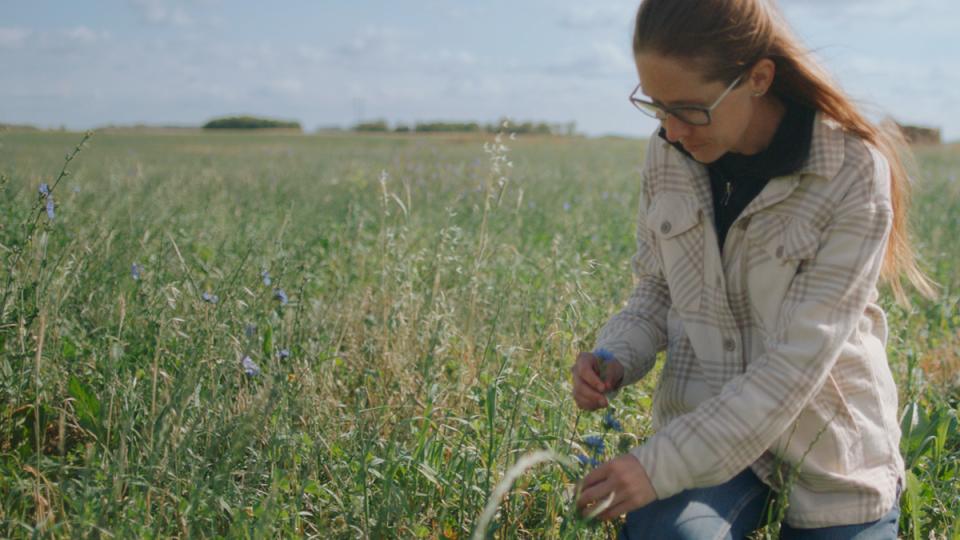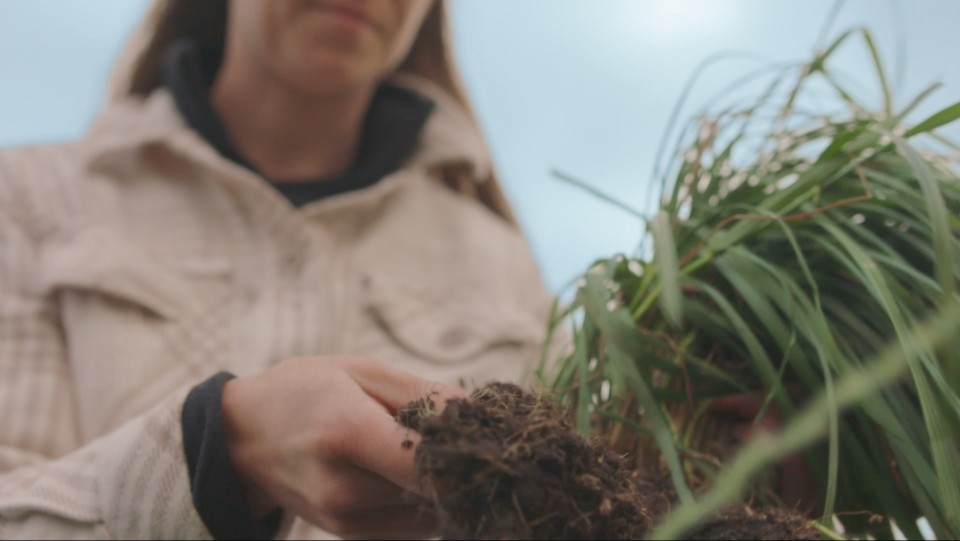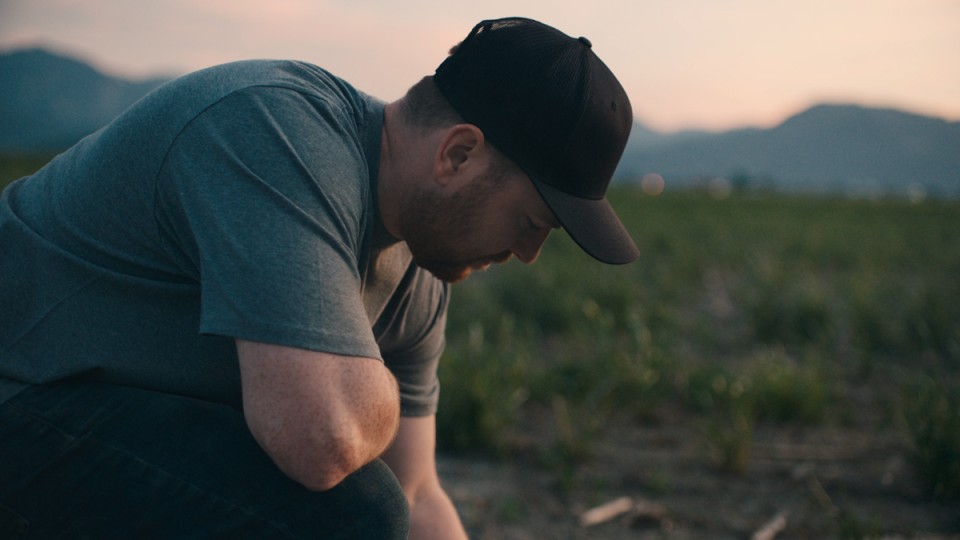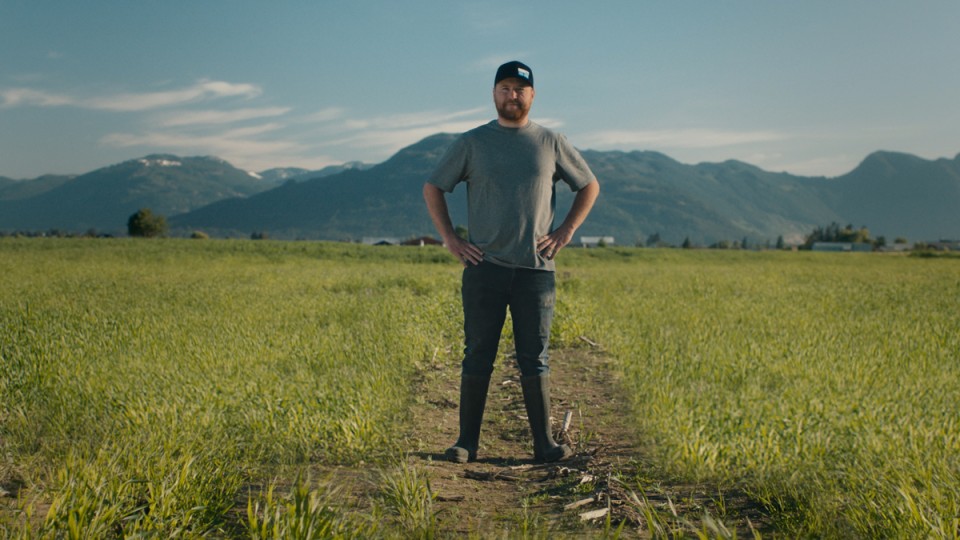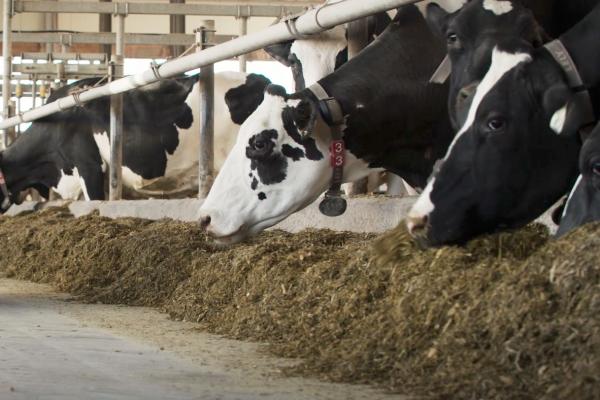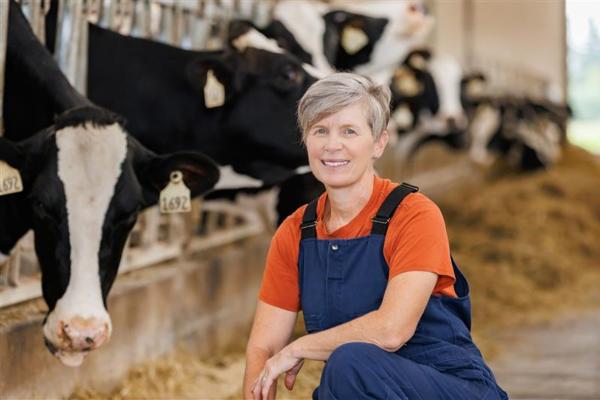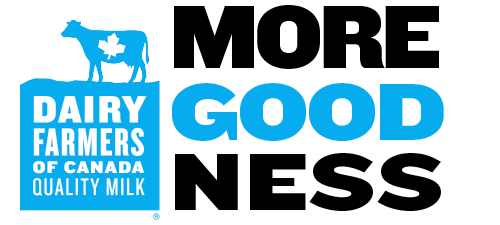Highlights
- Hear from a farmer in British Columbia who has a small amount of land, a Saskatchewan farmer who acted to adapt to more rainfall, and a Quebec farmer who love trees.
- Three different climates and soil types, same desire to improve soil health.
We asked three Canadian dairy farmers to share insights and learnings about their cropping practices, what changes they’ve made over the years, and if they have seen regenerative benefits in their fields and pastures.
Farmers face different realities on their farms and may adopt different practices in their sustainability journey. But they all have common values to improve soil health and grow healthy crops to sustain healthy cows.
- Erin in Saskatchewan turned to regenerative agriculture to increase resilience to heavy rainfalls in 2010 on their fourth-generation farm (dairy, beef, pigs, chickens and crops).
- Matt in BC makes the most of crop rotation, cover crops and orchard grass for their 90 cows on the second-generation farm.
- Alain from Quebec has adopted an organic and grass-fed approach on his 5th generation dairy farm, which also includes maple trees and sugar shack, as well as apple trees.

What sparked your interest in regenerative agriculture practices? What are you doing on your farm to improve soil health and be more sustainable?
Erin: We were already practicing crop rotation of corn and barley for silage mainly. When we looked at how we could still get a crop in very wet conditions after getting close to four feet of rain in 2010, we considered diversifying our crops. This was successful. Oats are more resistant to heavier rainfall early in the season, and when we added other cover crops in the mix, like fava beans, peas and other legumes, the variety of plants help the soil nutrient levels and offer protein for the cows.
Matt: My takeaway is the less tillage, the better. The less you do with soil the better. We do crop rotations, we plant cover crops and we reduce tillage as much as possible, because the less the land is tilled, the better it is for the soil. We noted that this cuts down on tractor and fuel use, which saves money and emissions too.
We have four fields, two on which grow orchard grass, a perennial, for four years while the other two grow corn. And then we switch them out – that’s crop rotation.
Alain: On our farm, we also avoid disrupting the soil. We aim to have prairies that have various forage plants and last many years – five, six years or more. We add legumes to the prairie grasses, like one would overseed a lawn. Overseeding helps regenerate the grasslands and have pastures that offer lots of nutrition to our grass-fed cows. Our approach has always been to go back to basics so we feed our cows with pastures, and harvested forages.
Erin: We also plant clovers, forage collards, kale, turnips and radish. Over the years, we have tweaked our blends as we aim to grow the proteins our cows and heifers need, instead of buying it from outside sources (like supplements from canola meal). When we think of crop rotation for soil health now, instead of thinking in terms of specific crops, we are thinking of cycling between annual, biannual and perennial plants. This helps us control the fungal to bacterial ratio in the soil along with weed management.
Alain: On some [of our] fields where the soil is lighter or more sandy, we plant cereals in the fall to ensure the soil is fully covered with vegetation, while leaving the natural grasslands to continue to capture nitrogen. In the past, we also tried intercropping, which alternated many rows of corn with rows of clover one year, and we sowed wheat the next year – it’s another way to keep the soil fertile.
Matt: During the four years we plant corn, we plant cover crops of 50 per cent rye grass, 50 per cent winter wheat in the fall, which grows in March and is harvested in May. In May, we plant the next corn crop. So there is always something growing and covering the ground, with living roots below ground. Manure is spread to help give nutrients to grow all our crops, but we find we need the help of extra fertilizers, especially to kickstart a crop when the warm weather arrives. We need this because we have very little land – about 80 acres – feeding 90 cows.
What types of challenges have you encountered and how do you overcome them?
Matt: The last three years have been very challenging with a flood one year, followed by two summers of drought. Crops do not grow so well in dry soil. We believe that crop rotation and not tilling the soil help build soil health. We hope this will help us have better crops and build resilience over time. In my time here, I’ve noticed that cover crops have improved but not the corn.
Erin: In 2010, we received a lot of rain for two years in a row. Large areas of the fields were under water and drowned the crops we had planted. We saw a few ‘islands’ where crops survived. So we started to look at alternative ways to farm to be more resilient to wet conditions.
It takes time to learn what works on a specific farm. We have learned a lot and have become more informed and more intentional in our actions to adopt regenerative agriculture practices in the last 5-6 years, even if we have been working on this for 10 years. The first years were a steeper learning curve. We now focus on what the soil needs in the long term instead of crop yields in one year.
Alain: When we started farming organically, we had already adopted several practices recognized by organic certification standards. We asked many questions. We were curious and wanted to find out what was considered more sustainable. One thing leading to another, we adopted organic production, then grass-fed cows, and regenerative agriculture.
Matt: Farming is the work of a lifetime – several lifetimes actually. We may be continuing the work of the previous generation, trying new things, hoping to make our farm more resilient, but I’m keenly aware that the world and the climate are changing. Until recently, farmers here said they could count on getting a few weeks of rain in the summer, which was a huge help for the crops, but I’m not sure these rainy weeks will be back. This is why we hope no-till practices will help us be more sustainable in the future. We will likely need to add other strategies in the next five years – perhaps irrigation or other strategies.
Erin: Another challenge is that we have heavy soils here. This means soil compaction is a risk we want to mitigate. So we opted to plant species of crops with tap roots because tap roots dig below that compacted soil ‘pan’. And we saw improvements in the soil far faster than we had thought.
Alain: We've always had a back-to-basics approach, working with nature, letting the soil regenerate itself. It is quite something to see the benefits of unharvested plants and manure for the soil. We find that our farm system is more resilient too. I believe that we need to think for the long-term in agriculture. Whether we choose to use some practices over the others, we are always trying to try something new and to continue doing what had proven to work, to be beneficial on our farm. We are always learning.
Have you noticed differences in your fields after you changed your cropping practices?
Erin: We have noticed the changes to our land after many years of no-till, cover cropping and other practices that regenerate soil. Over time, we see that the organic matter in the soil has increased, and we have better water infiltration from rainwater as well. Some soil health indicators like organic matter can increase faster that we had thought, that people generally think.
Matt: Mostly, we were noticing that the soil was getting better over the years with our crop rotation and no-till strategy, and this brought benefits in increasing yields in our cover crops. But then we had the flood, followed by drought. So we face a setback as a result.
Erin: We have been luckier. Growing legumes with our silage and rotating crops means we are less reliant on synthetic fertilizers, enabling us to have a more resilient farm. For example, 2021 was a very dry year on the Prairies, and we were still able to get about two-thirds of our yields. But I’m not sure what would have happened if we had two dry years in a row.
Alain: Our focus on this farm is to keep our fields in grass and forages, with legumes overseeded. When it’s well implemented, we have a wide variety of nutrients. We note that we keep life in the sol. It is really fascinating to see how green manure (plants that are not harvested) are very profitable for the soil and helps it regenerate and improve over time. Personally, I think prairies and grasslands are underestimated and that they are better for biodiversity than fields that are cultivated for crops.
Matt: Our current hope is not to improve the soil, as much as it is to build resilience to changing climatic conditions – climate adaptation. Like others, we hope to do more with less to be more sustainable in the future.
How do you encourage biodiversity on your farm?
Erin: We have a lot of earthworms on our farm and we can create compost from the organic by-products they generate. A few wetland spots on and around our farm are home to coyotes, deer, rabbits and hawks. Elk herds are also moving through Saskatchewan and they are attracted to our palatable crops, so our challenge is to keep our crops for our own farm animals. We do see some species that we had not seen before.
Matt: We have very little land here, and it is all in fields used to feed the farm animals. Neighbouring properties are closer to mountains and have more of the wildlife. We focus on the biodiversity in the soil during the four years fields are growing the orchard grass, a perennial, which lets life underground prosper, and maintaining living roots year-round the other four years of no-till crop rotation.
Alain: On our land, we have a sugar bush and its many trees. We aim to create habitats for many species because biodiversity means a web of various species. We recently added an apple orchard on the farm, we have fields of grass, and we leave large riparian zones near the waterways. Most of the landowners along the creek are working together to protect the creek’s riverbank. We love planting trees; we add several every year. We have planted several kilometres of trees over the years. We have installed bird houses and planted flowers for the pollinators.
Fields of grass where the soil is not disturbed will attract rodents and other preys, which attract predators like birds and foxes (these predators do not bother the cows). We are also planting more trees in these fields that we use as pastures. These trees bring a lot of benefits – from shade for cows to fungus to insects.
